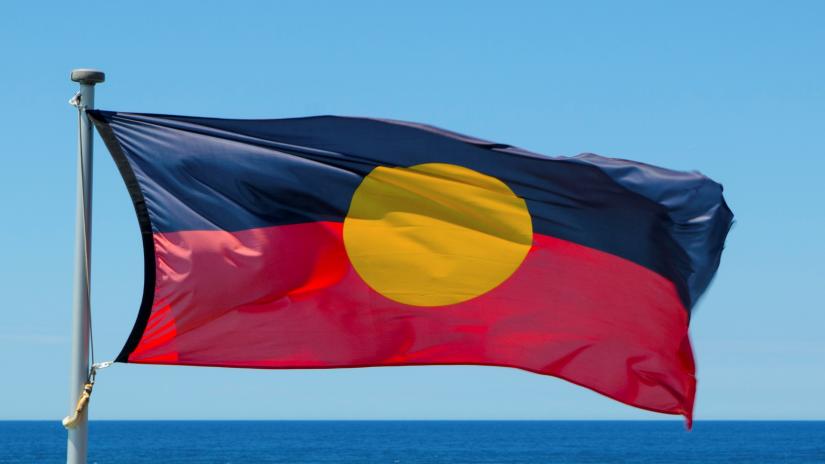The federal government has released the long-awaited legal advice on the Voice to parliament from Australia’s solicitor-general.

Image: Adobe Stock
The federal government today released the long-awaited legal advice on the Voice to parliament from Australia’s solicitor-general, Stephen Donaghue.
In it, Donaghue states that the proposed model for the Voice “will not fetter or impede the exercise of existing powers of Parliament”, adding that the proposal
is not just compatible with the system of representative and responsible government prescribed by the Constitution, but an enhancement of that system.
The advice makes clear the Voice is legally sound.
The Voice to parliament
In the Uluru Statement from the Heart, Aboriginal and Torres Strait Islander people expressed the “torment of our powerlessness”. They explained that they do not feel they are heard in the design of law and policy that affects them. They called for a Voice to be put in the Constitution to allow them to have a say.
In our system of government, proposed laws are developed within the executive, which includes the cabinet and government departments. Then they’re presented to parliament. This means that if an Aboriginal and Torres Strait Islander Voice is to be able to inform law and policy, it needs to speak to both the parliament and the executive.
The Albanese government’s proposed constitutional amendment recognises this. Section 129(2) provides that the Aboriginal and Torres Strait Islander Voice “may make representations” to the parliament and the executive government on matters relating to Aboriginal and Torres Strait Islander people.
This language was developed with the advice of some of the nation’s leading constitutional law experts. However, some concerns have been raised about the proposal.
For example, Opposition Leader Peter Dutton has argued that allowing the Voice to present its views to the executive will mark a radical change in Australia’s system of government. Conservative commentators have suggested the Voice will delay or derail proper administration. They argue ministers and public servants will need to give the Voice time and information to enable the Voice to make representations. Ministers may even be obliged to consult and adopt those representations.
The solicitor-general has dismissed these concerns.
Who is the solicitor-general?
The solicitor-general is Australia’s second highest-ranking law officer, after the attorney-general. However, while the attorney-general is a political position filled by a member of parliament, the solicitor-general is independent. Their job is to provide independent legal advice to the government and represent the Commonwealth in legal proceedings.
The solicitor-general was asked to advise the government on two questions.
-
whether the proposed amendment is compatible with Australia’s system of government
-
and whether the proposed amendment gives parliament the power to decide the legal effect of any representation, or whether parliament and the executive are required to consider or follow those representations.
What does the advice say?
Question 1
The solicitor-general was very clear. The Voice “would not pose any threat” to our system of government. In fact, it would “enhance” our system.
Donaghue reached this conclusion for two reasons. First, the Voice does not alter the powers of parliament or government in any way. Section 129(2) makes clear the Voice has no veto. Section 129(2) also does not impose any obligation on parliament or the executive to consult with the Voice or follow its advice.
Second, more fundamentally, the Voice would remedy a “distortion” in our system of government. The solicitor-general explained that the Voice would help overcome “barriers that have historically impeded effective participation by Aboriginal and Torres Strait Islander people in political discussions and decisions that affect them”. In short, it would improve our democracy by ensuring Indigenous people can have their voices heard.
Question 2
The second question was directed at the scope of the Voice’s power. It asked whether the parliament or executive would be required to consider or follow representations made by the Voice.
Once again, the solicitor-general was very clear: the answer is no. Donaghue explained that although it would “plainly be desirable for the Executive Government to consider any representations that the Voice makes to it”, parliament has the ultimate say.
This means parliament could enact a law to require ministers or public servants take the advice of the Voice into account when making decisions. However, parliament could always amend or remove such a requirement. The Voice is subject to parliament.
What happens next?
The Voice is a proposal which seeks to ensure Aboriginal and Torres Strait Islander people can participate “in the democratic life of the state”. It seeks to provide an opportunity for them to have their voices heard in the design and delivery of law and policy that affects them.
Prime Minister Anthony Albanese has argued the solicitor-general’s advice “puts to bed” concerns raised by Dutton and others. While the Opposition may disagree, the advice strengthens the view that the Voice is legally sound.![]()
Harry Hobbs, Associate professor, University of Technology Sydney
This article is republished from The Conversation under a Creative Commons license. Read the original article.

